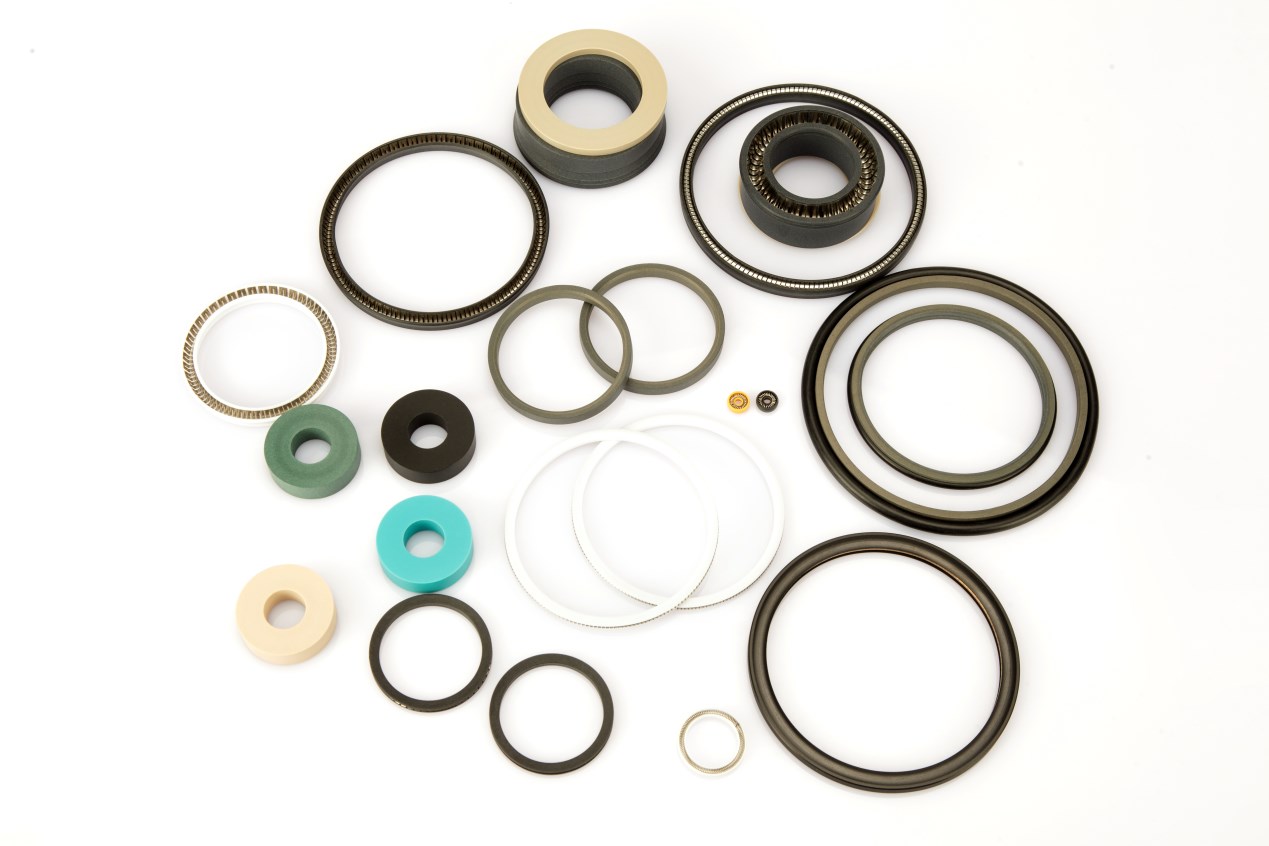-
National consultation hotline:
13590252450 / 18676388050


Time:2024-05-09 Preview:1
Hello everyone, I am the editor. Today I will introduce to you the types of fluororubber. The following content is compiled by the editor and the relevant content is for reference only.

Shenzhen Hao Seal Technology Co., Ltd. supplies fluororubber with complete specifications and free mold fees. You are welcome to call for consultation. Tel: 13590252450, Contact: Mr. Ouyang
1. Fluororubber
(FKM) Fluororubber is an elastic polymer with fluorine atoms attached to the carbon atoms of the main chain or side chain of the molecule obtained by polymerization or polycondensation of fluorine-containing monomers. Due to the different fluorine-containing monomers used in manufacturing, fluororubber has many varieties, which can be divided into fluorine-containing olefin copolymers and nitroso copolymers. Specifically, according to the chemical composition, it can be divided into fluorine-containing olefin fluororubber, fluorosilicone rubber, nitroso fluororubber, fluorinated acrylate rubber, fluorinated phosphazene rubber, fluorinated ether rubber, etc. Fluororubber has the characteristics of high temperature resistance, oil resistance and resistance to corrosion by various chemicals. It is an indispensable material for cutting-edge science and technology such as modern aviation, missiles, rockets, and space navigation. In recent years, with the continuous improvement of the automotive industry's requirements for reliability and safety, the use of fluororubber in automobiles has also grown rapidly.
Temperature range: -45℃~204℃
Advantages:
· Excellent chemical stability, resistant to most oils and solvents, especially various acids, aliphatic hydrocarbons, aromatic hydrocarbons and animal and vegetable oils · Excellent high temperature resistance
· Good aging resistance
· Excellent vacuum performance
· Excellent mechanical properties
· Good electrical properties
· Good permeability Disadvantages:
· Not recommended for ketones, low molecular weight esters and nitro-containing compounds
· Poor low temperature performance
· Poor radiation resistance Applicable
Medium:
· Mineral oil, ASTM No. 1 oil IRM902 oil and 903
· Non-flammable HFD hydraulic oil
· Silicone oil and silicone ester
· Mineral and vegetable oils, fats
· Aliphatic hydrocarbons (butane, propane, natural gas)
· Aromatic hydrocarbons (toluene, xylene)
· Chlorinated hydrocarbons (trichloroethane, carbon tetrachloride)
· Gasoline (including high alcohol gasoline)
· High vacuum
Unsuitable media:
· Ethylene glycol-based brake fluid
· Ammonia, amines, alkalis
· Superheated steam
· Low molecular weight organic acids (formic acid and acetic acid)
2. Perfluoro rubber (FFKM):
All hydrogen atoms in the monomer are replaced by fluorine atoms, and perfluoro rubber has unique properties. • Excellent corrosion resistance, almost resistant to all chemicals, including acids, alkalis, ketones, esters, ethers, aldehydes, amines, alcohols, strong oxidants, etc. • Excellent heat resistance, long-term temperature resistance up to 316°C.
3. Fluorosilicone e (FSI)
Fluorosilicone rubber, also known as γ-trifluoropropyl methyl polysiloxane, generally introduces 0.2% to 0.4% vinyl siloxane copolymerization modification into the molecular chain, colorless, transparent, highly viscous and plastic straight-chain polymer compound, the main chain is composed of silicon and oxygen atoms, the side groups connected to silicon are methyl, vinyl and trifluoropropyl, and the molecular weight is between 500,000 and 800,000. With various additives, it can be mixed into a homogeneous rubber compound. Under the action of organic peroxides, it can be vulcanized into various elastic rubber products. In addition to the characteristics of general silicone rubber, it also has excellent resistance to aviation fuel oil, hydraulic oil, engine oil, chemical reagents and solvents. Suitable for making aircraft fuel tank seals, engine accessories, fuel oil hoses, and oil pressure system seals
4. Tetrafluoroethylene (FEPM)
Tetrafluoroethylene (FEPM) is a copolymer of tetrafluoroethylene and propylene produced by emulsion polymerization. It has excellent high temperature aging resistance, acid and alkali resistance, weather aging resistance, excellent high temperature water vapor resistance, and unique compression permanent deformation resistance. In addition to its inferior fuel resistance to 26-type fluororubber, tetrafluoroethylene (FEPM) has quite good resistance to lubricating oil, hydraulic oil, engine oil and brake fluid. The biggest disadvantage of tetrafluoroethylene (FEPM) is its poor cold resistance. Temperature range: 0℃~230℃
5. Silicone Rubber (Q) Silicone rubber is divided into hot vulcanization type and room temperature vulcanization type.
The heat-curable type is divided into methyl silicone rubber (MQ), methyl vinyl silicone rubber (VMQ, the most used and the most product brands), methyl vinyl phenyl silicone rubber PVMQ (resistant to low temperature and radiation), and others include nitrile silicone rubber, fluorosilicone rubber, etc. MQ is a colorless, transparent, highly viscous, plastic, straight-chain polymer compound. The main chain is composed of silicon and oxygen atoms, and the side groups connected to silicon are methyl. The molecular weight is between 500,000 and 800,000. VMQ is a colorless, transparent, highly viscous, plastic, straight-chain polymer compound. The main chain is composed of silicon and oxygen atoms, and the side groups connected to silicon are methyl and vinyl. The molecular weight is between 500,000 and 800,000. PVMQ is obtained by introducing diphenylsiloxane chain segments or methylphenylsiloxane chain segments into the molecular chain of vinyl silicone rubber. Temperature range: -60℃ (special to -115℃) ~ 204℃ (special to 260℃)
6. Chloroprene (CR) Chloroprene is made by polymerization of chloroprene monomers. It is a polar rubber between saturated and unsaturated. The vulcanized rubber has relatively good ozone resistance (better than NR, SBR, NBR, worse than EPDM, IIR), weather resistance, chemical corrosion resistance and aging resistance. It also has good mechanical properties, flame retardancy and good wear resistance, low temperature elasticity, good distortion resistance, resistance to refrigerants such as dichlorodifluoromethane and ammonia, resistance to dilute acid, resistance to silicone ester lubricants, but not resistance to phosphate ester hydraulic oil. It is easy to crystallize and harden at low temperatures, has poor storage stability, and has a large expansion volume in mineral oil with a low aniline point.